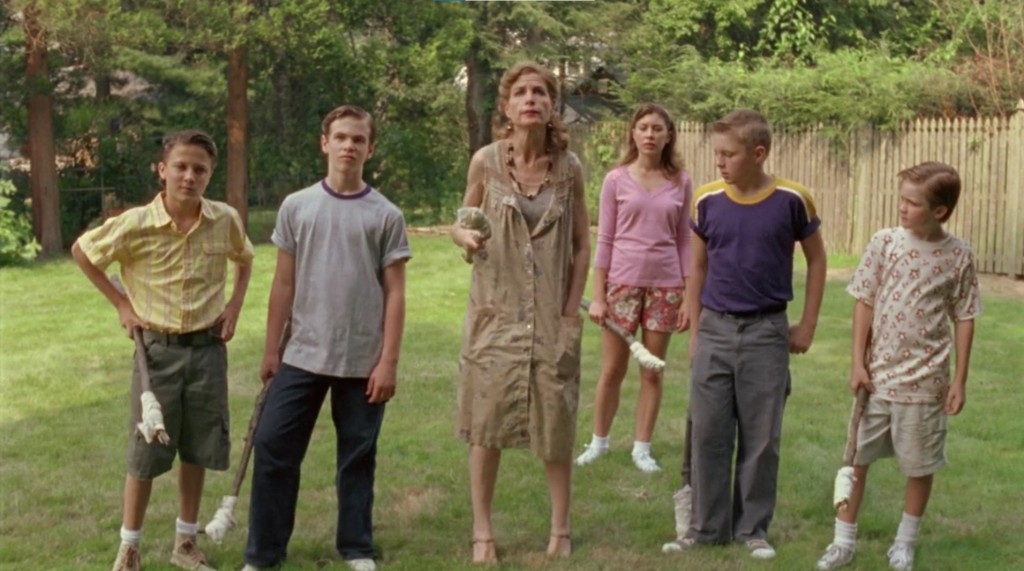A 2007 horror movie called “The Girl Next Door” (also known as “Jack Ketchum’s Evil”) was released. It will undoubtedly make your skin crawl and is unpleasant and dismal. The main character of the movie is David Moran, who tells the story of the summer of 1958, which has tormented him ever since as a middle-aged man in 2007. David has a crush on Meg Loughlin when he is a teenager and first meets her. Meg and her sister Susan, who has special needs, have been living with her aunt Ruth Chandler and her cousins since their parents died in a car accident. Meg is particularly abused by her cousins. The Chandler family, who frequently invites some of the neighbouring kids to assist them in tormenting the Loughlin girls, is portrayed in graphic detail in the movie for their absolute wickedness.
Unrestrained investigation into the darkest corners of human nature is presented in “The Girl Next Door.” It doesn’t celebrate violence and cruelty, in contrast to many other horror movies with comparable themes. Instead, it makes use of them to help the viewer comprehend the victims’ terrible sorrow and despair. This information will help you determine whether “The Girl Next Door” was influenced by actual occurrences.
Is The Girl Next Door Based on a True Story?
The movie “The Girl Next Door” is, in fact, based on a true story. It is a film version of Jack Ketchum’s 1989 novel of the same name, which was based on the events surrounding Sylvia Likens’ murder in 1965. As a result, even if David, Meg, Ruth, and the others are fictional, some of them are based on real people. Sylvia Likens, who served as Meg Loughlin’s inspiration, is honoured throughout the movie.
On January 3, 1949, Sylvia was born as the middle child of two sets of fraternal twins. Lester Cecil Likens and Elizabeth “Betty” Frances (née Grimes), her parents, were carnival workers who lived in Indianapolis, Indiana, with their kids. Paula and Stephanie Baniszewski are sisters who Sylvia and her younger sister Jenny (who served as the model for Susan) met while attending Arsenal Technical High School. They got to know their single mother, Gertrude Baniszewski, through them (the inspiration for Ruth).
The Likens family was having trouble in July 1965 because Betty had been imprisoned for theft. Lester’s wife was meant to accompany him later, but he had to travel to the East Coast for work. He so left Sylvia and Jenny with Gertrude and assured her that he would provide $20 weekly for their maintenance. Subsequently, Sylvia and Jenny moved into the Baniszewski home at 3850 East New York Street.
The first several days of Sylvia and Jenny’s stay with the Baniszewskis were quiet. However, the abuse started when their parents started paying their weekly boarding charge just a day or two late. Both girls were first tortured and humiliated, but by mid-August of that year, Gertrude began concentrating solely on Sylvia. According to reports, she was motivated by envy, primarily as a result of her inferiority complex about her appearance and lack of opportunities. The abuse only intensified in sadistic nature over time.
In addition to allowing her children to harass Sylvia, Gertrude also invited neighbouring kids like Coy Hubbard and Richard Hobbs to participate. The girls reportedly didn’t mention anything about their conditions to Lester and Betty when they came to see in late August. This was most likely because Gertrude was present. Sylvia died on October 26, 1965, following several months of such cruel torment. She had only turned 16 at the time.
Authorities detained Gertrude, her children Paula, Stephanie, and John Jr. Baniszewski, as well as Coy Hubbard and Richard Hobbs, on suspicion of murder based on Jenny’s official statement. On December 30, 1965, the Marion County grand jury charged Gertrude, Paula, John, Coy, and Richard with first-degree murder. Stephanie consented to testify for the state in the meantime.
On May 19, 1966, following a 17-day trial, the jury found Gertrude guilty of first-degree murder and Paula guilty of second-degree murder. Manslaughter charges were brought against the three boys. Gertrude and Paula were given life sentences a little over a week later, on May 25, while John, Coy, and Richard were given sentences of 2–21 years. Later, they were all granted early parole. On June 16, 1990, Gertrude passed away from difficulties brought on by lung cancer. Even if some characters don’t have the same names as their real-life counterparts and some are fictional, it is clear that “The Girl Next Door” is based on a genuine story.



